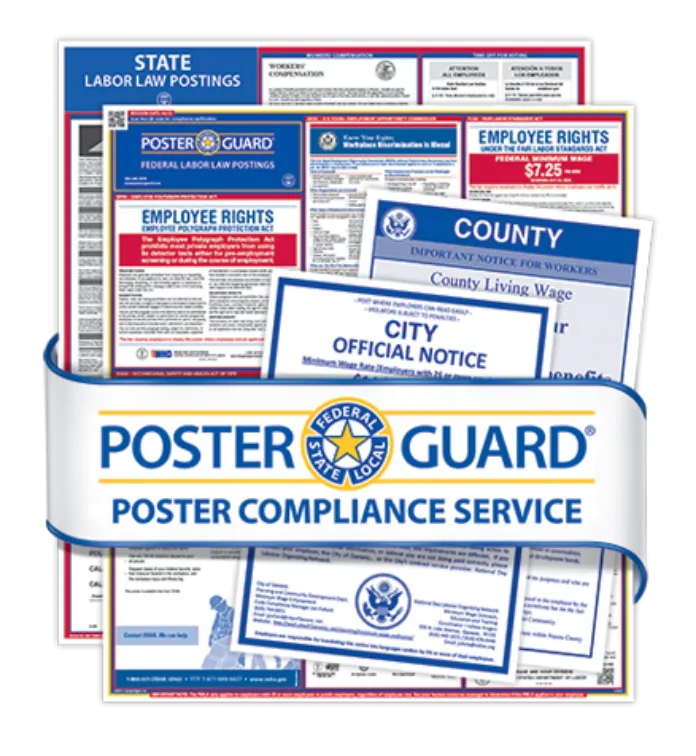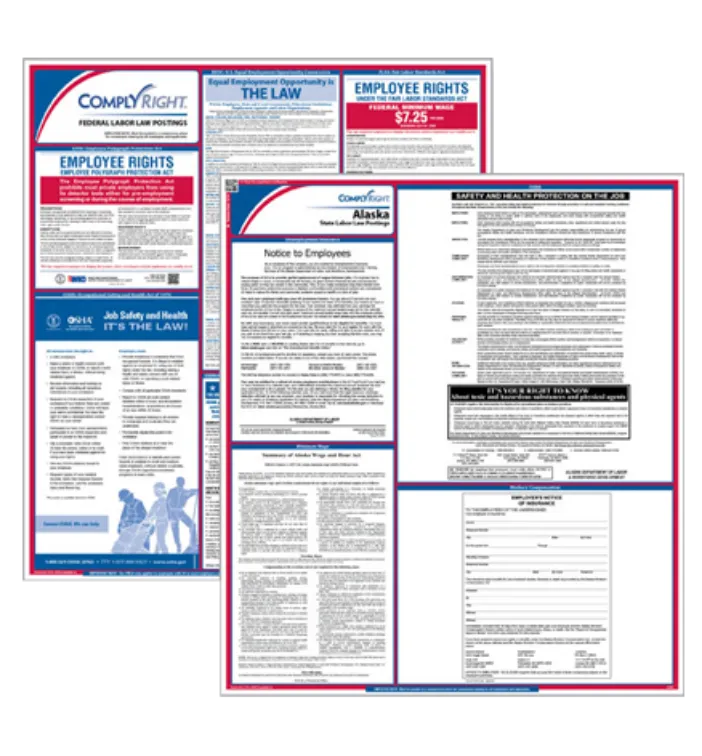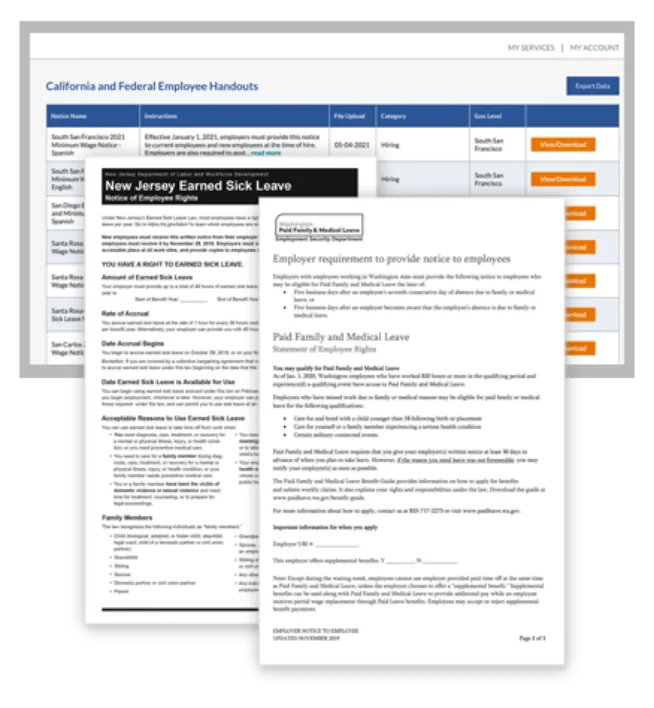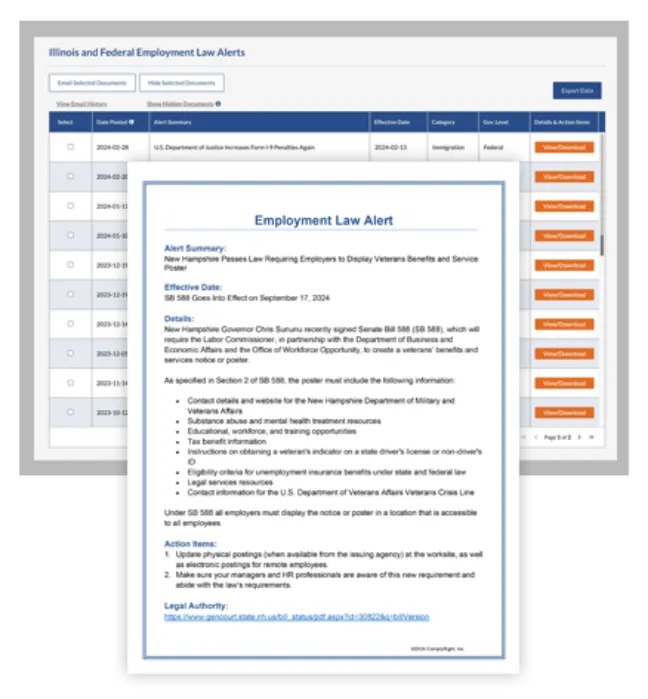Labor law posting compliance is an ever-changing responsibility for U.S. employers. And there’s no better time to review the requirements – and ensure your postings are current and complete – than the first of the year. Remember, too that posting compliance is your first line of defense with a government audit or employee lawsuit, so it’s important to get it right year-round. Follow these 10 basic steps to get your business in line now:
Step 1 – Obtain required postings at every level
In addition to the six federal postings – Equal Employment Opportunity (EEOC), Minimum Wage (FLSA), Military Rights (USERRA), Workplace Safety (OSHA), Employee Polygraph Protection (EPPA) and Family and Medical Leave (FMLA) – be aware that up to 19 state postings may be necessary, depending on your state. (If you’re in Nevada, for example, this could mean as many as 25 total postings at just the federal and state levels.) Plus, additional posters are required in certain cities and counties, particularly due to minimum wage legislation across the nation.
Did you know the EEOC issued a mandatory poster update in October 2022? Effective immediately, covered employers must replace the previous ‘Equal Employment Opportunity is the Law’ poster with the new ‘Know Your Rights: Workplace Discrimination is Illegal’ poster.
Step 2 – Check that labor law postings are current
Posting changes are on the rise, with hundreds of mandatory state poster changes occurring each year. In 2020, our labor law experts identified 186 changes; 216 changes in 2021; and 210 changes and counting in 2022. If you’re not keeping up with the latest changes and updating your postings accordingly, you’re not fully compliant.
Step 3 – Be certain postings meet all government requirements
Posters must satisfy minimum size and font requirements, along with strict color and/or layout specifications. Cutting corners by shrinking posters or not printing in color can put your company at risk for non-compliance.
Step 4 – Address postings in all required languages
You may need to display postings in English and Spanish, regardless of your workforce demographics. In fact, 19 states, plus Washington, D.C. and Puerto Rico, require certain postings in Spanish, even if you have no Spanish-speaking employees.
Step 5 – Don’t ignore remote worker requirements
Are you among the many employers now allowing employees to work from home? By law, you must inform all employees of their legal rights and responsibilities, which includes these remote workers. If an employee regularly reports to the office (e.g., several times a month), physical posting locations in the business are sufficient. For other remote workers, however, you’ll want to explore an electronic solution to meet the requirement.
Step 6 – Make sure to display applicant area postings
Of the six federally mandated labor law posters, four must be visible to job applicants: FMLA, EEOC, EPPA and USERRA. Certain state, city and county postings may be necessary, as well.
Step 7 – Include any industry-specific postings
Certain industries, such as healthcare facilities, restaurants and public sector employers, have additional labor law posting requirements under federal and state laws. They are a commonly overlooked area of compliance, but they must be addressed to ensure your business is fully protected.
Step 8 – Pay attention to federal contractor requirements
In recent years, the number of businesses with government funding/contracts has grown – especially in industries such as construction, finance, telecommunications, technology and transportation. Additional posting obligations depend on types and values of contracts – with severe penalties for non-compliance, including steep fines up to suspension or cancellation of federal contracts.
Step 9 – Be certain you have enough posting stations
Labor law posters must be displayed in “conspicuous locations” accessible to all employees. Specific posting locations depend on your facility size and layout, with most companies requiring multiple posting display sites to comply (front vs. back of the house). Consider posting in break rooms, in locker rooms, at employee entrances, in the HR department, and in applicant areas.
Step 10 – Take care of E-Verify requirements
E-Verify is an internet-based system operated by the U.S. Department of Homeland Security to verify the employment eligibility of new employees. If you participate in E-Verify – either as a requirement for your business or state, or voluntarily – you must display related posters.
Cover Every Step with Attorney-Developed Compliance Solutions
Labor law posting requirements are getting more and more complex every year. With a service like Poster Guard® Compliance Protection, you can be confident you’re addressing every nuance. Our posting solutions – from the base service to industry-specific, applicant area, foreign language or remote worker postings – are guaranteed to be 100% compliant with current laws. Your business is protected with complete, year-round labor law coverage (no matter how many changes) at the federal, state, county and city levels.







